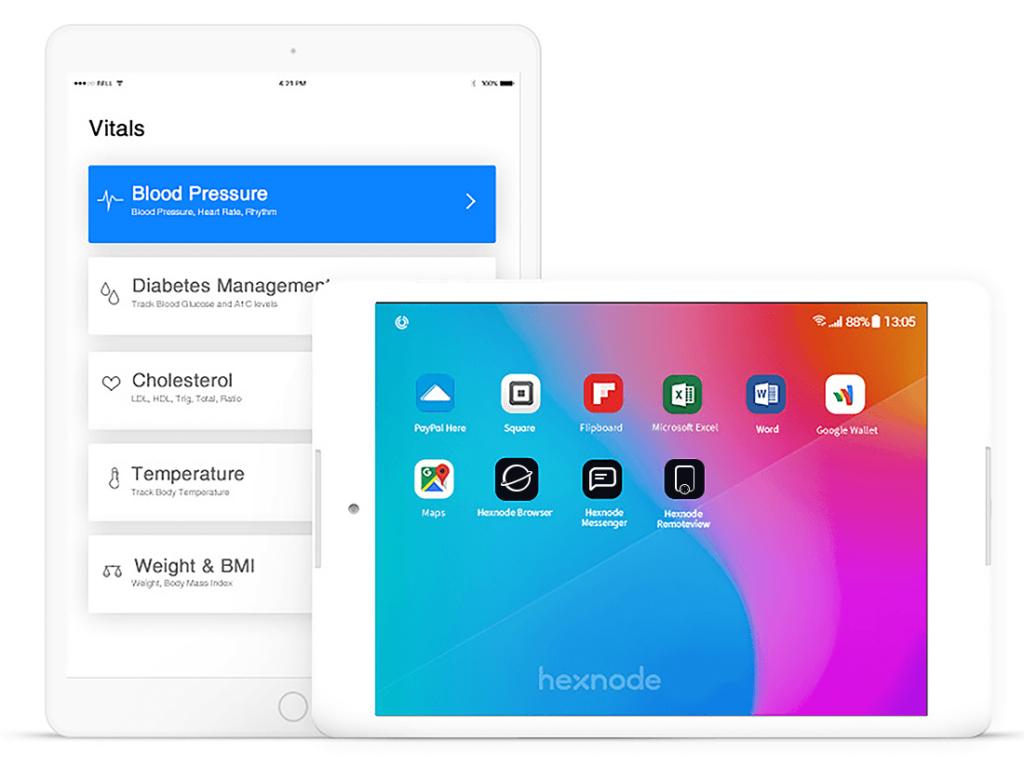Bring your own device, or BYOD concept has been getting a lot of attention from enterprises over the past few years. And the ongoing pandemic has made it more important than ever. That’s why we are seeing an influx of Mobile Device Management (MDM) and Unified Endpoint Management (UEM) software. So, we were certainly excited to talk to Hexnode’s founder and CEO Apu Pavithran about his journey, the company’s evolution, and the way forward.
PS: the interview has been edited for the sake of brevity.

Table of Contents
1. Before we talk about Hexnode, could you share your journey into the world of SaaS?
I was intrigued by the idea of using software simply with a web browser without additional hardware, saving up a lot of time and effort. It was certain that SaaS services could be the future of businesses and I was particularly inclined towards contributing to that domain. Having spent a considerable time studying the evolution of the model, the rapid progress of the market, and the various ethos of subscription-based models, I felt thoroughly convinced about taking the plunge into the world of SaaS.
2. What gaps did you see in the market before launching Hexnode?
We had done a detailed study on the MDM market and analyzed the industry with the available data. Back in 2013, the MDM industry was a far cry from the competitive industry with numerous players that we see now. There were only a handful of players like Blackberry, AirWatch, MobileIron, etc. Most of these MDM solutions provided only limited functions, albeit expensive. And on top of it, these solutions were complicated, requiring specialized expertise to manage. We successfully identified the gaps and brought in Hexnode, which was easier to use and offered optimum value for money.
3. Why do you think unified endpoint management is so important for enterprises, and how is it different from mobile device management software?
Mobile device management software presented an easier way to manage mobile devices and ensured that certain adequate policies could be applied on devices used for corporate work. Unified endpoint management brought into it a diverse range of capabilities, like mobile application management (MAM), mobile content management (MCM), mobile threat management (MTM), containerization, Identity and Access Management (IAM). Unlike MDM, UEM allows managing a whole lot of diverse endpoints like PCs and desktops, mobiles, tablets, printers, wearables, rugged devices, and IoT devices. UEM can be regarded as a superset of MDM that helps in enhancing productivity without compromising on security.

Moreover, the workplace doesn’t just include laptops or desktops these days. It’s a multi-OS environment with devices ranging from conventional desktops to state-of-the-art IoT gadgets. This requires much more than what a traditional MDM can offer. That’s where UEM comes in.
4. How has Hexnode evolved since its inception?
Hexnode was founded in 2013 as a mobile device management solution. We commenced operations in a modest office with a few employees. It has evolved from MDM to EMM and then to UEM, by constantly adapting and upgrading. With consistent revamps and updates, Hexnode has managed to gain a major foothold in the market.
The company achieved tremendous growth in the past 12 months with a 100 percent increase in revenue and a 200 percent growth in customers since September 2020. Over the years, Hexnode UEM has garnered numerous awards and recognitions, such as mentions in the Gartner Magic Quadrant for UEM 2021 and also as a notable vendor in its Midmarket Context. Hexnode has also been recognized as a Mobility Specialist in Forrester’s Now Tech Unified Endpoint Management Report for Q2 2021.
Hexnode had its first-ever user conference HexCon20, in Dec 2020, which was followed up by HexCon21 in September 2021. HexCon21 brought together more than 100 industry leaders and some of the finest minds in the cybersecurity landscape this year. With around 3,000 viewers attending virtually, HexCon is becoming one of the go-to cyber security events in the industry.
5. How many customers do you have now? Are there any specific types of companies that use Hexnode or its industry-agnostic?
Hexnode is industry-agnostic and has applications in numerous industries across geographies. Any business that employs computers or mobile devices and uses the internet needs a UEM solution. I think that covers a significant portion of the business world. We have thousands of customers in 120 plus countries that too in diverse industries like education, government, healthcare, retail, construction, manufacturing, services, IT, transportation, logistics. It’s like, you name it, we’ve got it.
6. The space is quite competitive with both tech giants as well as several other start-ups, how does Hexnode stand out?

I’m of the opinion that the growing number of players and the ensuing competitiveness augurs well for the customers. The UEM space is filled with giants in the industry and some promising start-ups. Hexnode has fortunately managed to achieve stable growth in a highly competitive environment. While many of our competitors offer integration with a specific platform, Hexnode works with all major Operating Systems. One of our distinct features is an ever-reliable support team that is just a call away. Our support team works 24×7 and has earned a name for itself for the rapid and timely response. We offer the best value for money among our competitors and is committed to offering support to SMBs and new entrepreneurship ventures.
7. Could you shed light on your marketing strategy?
Marketing is all about sharing your story and making the product visible to a broader audience. Being perceptive to customers’ requirements and keeping up with the market trends helped us build a product that the users receive well. As a marketer, the ability to foresee the future of the industry is vital. And to do that they have to keep a close watch on the industry, the competitors, new technology and basically be aware of what’s happening in the world.
We have recruited some of the best minds with the creativity and vision to lay a roadmap and develop strategies in sync with the latest developments.
8. How has the ongoing pandemic affected Hexnode – both in terms of users of your software and the business itself, especially considering most people resorted to their own devices in the remote work era?
There was an exponential increase in the number of enterprises that implemented UEM solutions in the last year alone. UEM is a sophisticated solution since it covers a lot of functions. Usually, the sales cycle for a UEM solution spans a few months. But from what we have seen, it has decreased down to almost a month now. This directly relates to the urgency of the situation.
UEMs was the need of the hour during the initial lockdown months. And in the following months, we saw an alarming increase in cyber-attacks all over the world. That pointed out why enterprises needed to make sure to have adequate security measures in place. There were also cases where businesses had to close down during the lockdown and we provided them with a pause button to stop payment temporarily while they waited out the storm.
Hexnode’s support team was moved to a secure location during the lockdown because we couldn’t compromise on the support for our customers and neither with the well-being of our team, which is of paramount importance, always. This meant the continuous availability of the tech team.
9. What’s next for Hexnode? Any new features that users should look forward to?

Hexnode has been consistently upgrading and revamping in line with the developments in the domain to offer the best services to our customers. We are currently working on rolling out Hexnode Do – a SaaS app management platform that provides a unified platform to manage and secure different SaaS applications. We are also expanding channel partnerships and collaborating with many tech solutions to provide an enhanced customer experience.
10. Could you share your biggest learnings of building a global product out of India?
Building a global product from India has been quite an exciting journey and a humbling learning curve. While we were optimistic about the worth and the prospects of the product even from the onset, the kind of success we managed to accomplish was overwhelming. Having clarity on the nature of the global market, a detailed study of the competitors, and envisioning a roadmap is essential to entrepreneurship.
India has huge manpower and is the world’s youngest workforce which brings a lot of innovation and freshness in thought and approach. I believe that the cultural values Indians espouse and the struggles they endure on a daily basis to move up the ladder explain their success in entrepreneurship and in places like Silicon Valley. The rapid technological advancements in India are also conducive for businesses.
Being a global product, there should be no compromise on the quality of the product and the services we offer.
11. What are your favourite SaaS softwares out there?
That’s a tough one as there’s a lot that I like. But I’d put Intercom, GitLab, and Stripe at the top of the list.